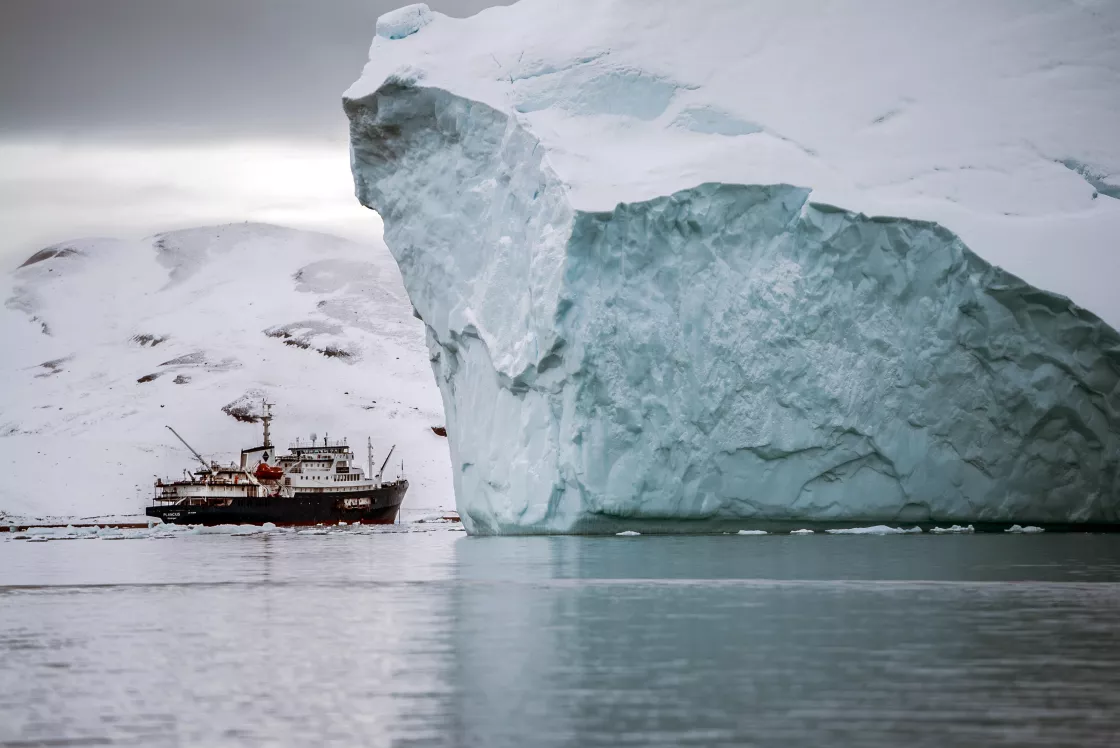Each year, Arctic sea ice undergoes seasonal cycles. It waxes in autumn and winter, usually reaching its annual maximum extent in March, and wanes in spring and summer, reaching its annual minimum extent in September. Researchers have developed models to predict trends in Arctic sea ice extent over different time periods, from 24 to 120 hour operational forecasts to decadal and century scale responses to greenhouse gas increases. No models are perfect, but there are limitations in seasonal prediction models that attempt to forecast sea ice conditions one to three months in advance. It is difficult to predict sea ice in this timeframe due to the variable nature of weather and ocean behavior.
However, seasonal forecasts of sea ice behavior in the Arctic summer can be invaluable to a multitude of stakeholders because much of the activity planned in the Arctic takes place during the summer months. Seasonal predictions can help communities understand when sea ice will come and go throughout the year so they can better plan for activities like hunting, fishing, and travel. Ice cover, or lack thereof, can affect which areas of the Arctic Ocean are available for fishing, which is relevant information for fisheries managers. Parts of the Arctic Ocean, such as the Northern Sea Route, are open for part of the year when sea ice retreats. The ability to predict when ships can safely pass through Arctic waters matters for shipping companies.
Monitoring, predicting, and analyzing changes occurring to Arctic sea ice is an essential area of research for NSIDC, which includes participating and holding leadership positions in the Sea Ice Prediction Network (SIPN).
Improving sea ice forecasts
SIPN is a collaborative network, made up of scientists and stakeholders, that aims to improve upon and communicate about sea ice forecasting and prediction. Three NSIDC scientists—Mark Serreze, Julienne Stroeve, and Walt Meier—are actively involved in SIPN and sit on the SIPN leadership team. Several additional NSIDC staff members have also contributed to the network since it began in 2014.
SIPN focuses primarily on bringing experts together to improve seasonal predictions of sea ice behavior. NSIDC coordinates and participates in the following areas of SIPN:
- Collecting sea ice predictions. One major initiative of SIPN is the Sea Ice Outlook (SIO). The network invites sea ice scientists, community members, and other stakeholders to submit predictions of September sea ice behavior each June, July, and August, along with their methods. The objective is to identify models and methods that work best in predicting sea ice behavior in order to continue improving forecasts.
- As part of the SIO and in collaboration with other SIPN leaders, NSIDC contributes to reports in June, July, and August of each year containing the predictions and perspectives of those who submitted, along with discussions on various topics.
- NSIDC also hosts an online SIPN list of resources and data available from multiple sources that may be useful to those contributing to these sea ice predictions.
- NSIDC scientists also contribute Outlooks using methods they developed to predict September sea ice.
The Sea Ice Outlook (SIO)
The SIO initiative began in the summer of 2008 as a Study of Environmental Arctic Change (SEARCH) and NOAA project. SIPN took over management of it in 2014. The SIO is a forum for those interested in sharing their predictions, one to three months in advance, of when Arctic sea ice will reach its annual minimum extent. Extent is a measurement of the area of ocean where there is at least some sea ice, and it is an indicator of how climate is affecting the Arctic. Anyone is welcome to submit predictions to the SIO via an online form that is managed by NSIDC. The network is hopeful that identifying accurate predictions and the methods used to develop them will help scientists to improve statistical and modeling approaches for seasonal predictions overall.
Collaboration across organizations and funding agencies
SIPN has relied on collaboration from a variety of organizations and agencies to share their expertise, knowledge, and resources. The lead of the project is Uma Bhatt, a professor of atmospheric sciences at the University of Alaska Fairbanks (UAF). Other current members of the leadership team include: Mitch Bushek at NOAA Geophysical Fluid Dynamics Laboratory (GFDL), Ed Blanchard-Wrigglesworth at the University of Washington, and Walt Meier at NSIDC. Logistics and web support is provided by the Arctic Research Consortium of the United Stats (ARCUS), particularly Stacey Stout. In the past, others have participated in the leadership team, including others at UAF, and the University of Washington as well as researchers at the NOAA Pacific Marine Environmental Laboratory, the University of Manitoba, University College London, University of New Hampshire, and Oregon State University.
The National Science Foundation (NSF) provided the network’s first grant. Later funding came from NSF, the Office of Naval Research, NOAA, the Department of Energy, the Year of Polar Prediction, and the United Kingdom’s Natural Environment Research Council. In 2024, the project has been funded by in-kind support by the leadership team and internal support from ARCUS. Funding for future years is currently being sought.
Timeline
- 2008: Sea Ice Outlook begins
- 2014: SIPN begins managing Sea Ice Outlook
- SIPN1: 2014 to 2017
- SIPN2: 2018 to 2023
- 2024: Leadership team in-kind support
